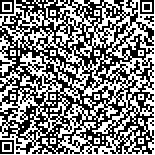| 本文已被:浏览 1688次 下载 1705次 |

码上扫一扫! |
|
|
| 雷州半岛东部近海浮标大型固着生物污损特点 |
|
韩帅帅1,2, 曹文浩1,3, 严涛1,2,3, 谢恩义4, 林岳光1, 程志强1, 林明晴1,2
|
|
1.中国科学院南海海洋研究所热带海洋生物资源与生态重点实验室 广州 510301;2.中国科学院大学 北京 100049;3.中国科学院海洋环境腐蚀与生物污损重点实验室 青岛 266071;4.广东海洋大学水产学院 湛江 524088
|
|
| 摘要: |
| 对布设在雷州半岛东部距岸约30—42km、浸海时间约24个月的3个近海浮标进行了大型固着污损生物分析研究。结果表明,污损浮标的大型固着生物共35种,优势种以侧花海葵(Anthopleura spp.)、变化短齿蛤(Brachidontes variabilis)、网纹藤壶(Balanus reticulatus)为主,其次为翡翠贻贝(Perna viridis)、刺巨藤壶(Megabalanus volcano)和钟巨藤壶(M.tintinnabulum tintinnabulum)。3个近海浮标均被固着生物严重污损,生物附着量变化范围为3994.20—8641.72g/m2,浮标各部位组间差异不显著。物种多样性指数介于1.49—2.99,丰富度指数1.34—2.68,均匀度指数0.38—0.64。在离岸距离约42km的1号浮标,固着生物种类组成已表现出外海性特点,有少量有柄蔓足类出现,而离岸距离分别约35km和30km的4号浮标和7号浮标,污损浮标的大型固着生物仍为沿岸性种类。离岸距离、采样季节、采样深度、光照强度、海流状况和水域的开阔与封闭程度可能是影响固着生物群落组成的因素。 |
| 关键词: 南海 雷州半岛 浮标 污损 固着生物 |
| DOI:10.11693/hyhz20171000255 |
| 分类号:X171;X55 |
| 基金项目:国家自然科学基金项目,41176102号;广东省海洋和渔业发展专项,A201701C06号;湛江市科技计划项目,2013C01022号;中国科学院海洋研究所海洋环境腐蚀与生物污损重点实验室开放基金项目,MCKF201601号。 |
|
| BIOFOULING BY SESSILE MACRO-ORGANISMS ON OFFSHORE BUOYS EAST OF THE LEIZHOU PENINSULA, THE NORTHERN SOUTH CHINA SEA |
|
HAN Shuai-Shuai1,2, CAO Wen-Hao1,3, YAN Tao1,2,3, XIE En-Yi4, LIN Yue-Guang1, CHENG Zhi-Qiang1, LIN Ming-Qing1,2
|
|
1.Key Laboratory of Tropical Marine Bio-resources and Ecology, South China Sea Institute of Oceanology, Chinese Academy of Sciences, Guangzhou 510301, China;2.University of Chinese Academy of Sciences, Beijing 100049, China;3.Key Laboratory of Marine Environmental Corrosion and Bio-fouling, Institute of Oceanology, Chinese Academy of Sciences, Qingdao 266071, China;4.Faculty of Fisheries, Guangdong Ocean University, Zhanjiang 524088, China
|
| Abstract: |
| An investigation was conducted on sessile macrofouling organisms colonizing 3 offshore buoys deployed for about 24 months east of the Leizhou Peninsula, in the northern South China Sea. A total of 35 sessile species were identified and the dominant species were Anthopleura spp., Brachidontes variabilis, Balanus reticulatus, Perna viridis, Megabalanus volcano, and M. tintinnabulum tintinnabulum. The biomass ranged from 3994.2-8641.72g/m2 and there was no significant difference among groups. Meanwhile, the Shannon-Wiener diversity index (H'), Margalef's species richness index (d), and Pielou's evenness index (J') of the community structure ranged from 1.49-2.99, 1.34-2.68, and 0.38-0.64, respectively. A little bit of the pedunculate barnacles Lepas anatifera and L. anserifera were collected on Buoy 1 deployed 42km offshore. However, the sessile fouling communities on Buoys 4 and 7 (35km and 30km offshore, respectively) were composed of littoral species. In general, the fouling characteristics of sessile macro-organisms are closely related to the factors such as distance from shore, sampling season, water depth, light, local current conditions and open extent of waters. |
| Key words: South China Sea Leizhou Peninsula buoy fouling sessile organisms |
